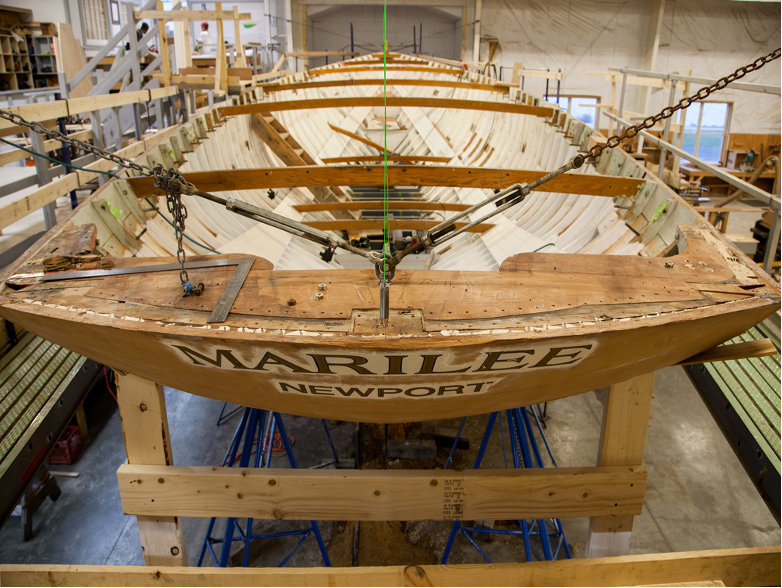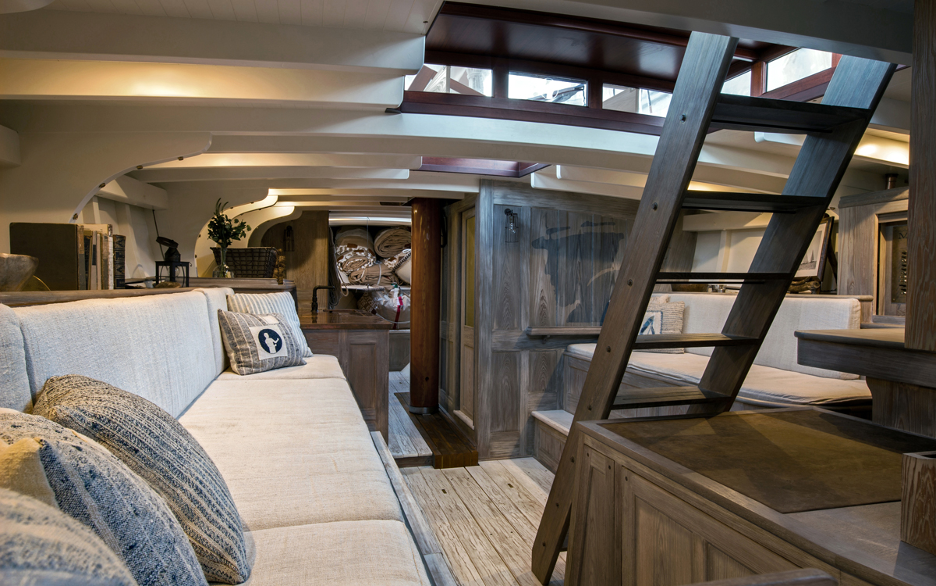Boat Renovations and Restorations 101
There’s an intangible, but visceral feeling we get when we hear the rumble of the engine and smell the exhaust of a Porsche 911 2.7 Carrera RS or view the way the bow of 1962 Riva Aquarama cuts through the water. It’s almost hard to put into words other than to say it’s magical. And despite the best efforts of the modern design world, there’s just something about the classics that can’t be replicated or replaced. Some things simply can’t be improved upon.

And in the fast-fashion world we live in, where it seems like half of what we buy has been replaced with a newer version before we leave the store, it gives us a good feeling to keep something old going, or better yet, to bring something from the past back to life.

But for every unicorn rebuild project, there are plenty of renovation and restoration disasters along the way. Conversely, there is a mountain of smaller, less illustrious restorations and renovations, implemented successfully, which didn’t require the net worth of a Saudi Sheik to accomplish, but still extended the life and enjoyment of an old and beloved boat.
Big or small, iconic or sentimental, the key to any successful restoration project is figuring out how to identify the right fixer-upper and arming oneself with the knowledge to enter into a rebuild project with a clear understanding of the challenges, costs, and risks along the way.
Renovations vs. Restorations
The terms renovation and restoration are often used interchangeably. And while they may be close cousins, the goal and outcomes of a renovation or restoration project can be quite different in terms of objective, scope, and cost.
What is Restoration?

The primary objective of a restoration project is to bring a boat back to its original design and construction as closely as possible. Good restoration experts put significant time into researching the origins and background of the original build including understanding the history of the designer, construction techniques of the time, design philosophy, parts suppliers, and material sources.

Restoration experts often embark on a difficult treasure hunt as they scour the world for rare and comparable historical parts. This process can almost be as time consuming as the construction work itself.
During the restoration process, original materials are matched, and methods of construction are reused. Modifications from the original design are generally limited to changes necessary to bring a project up to modern codes and standards including electrical and life-safety. Stepping aboard a fully restored vessel should be like taking a step back in time.
What is Renovation?
Renovation is a much broader term. Generally speaking, it’s the process of renewing a boat or structure by fixing what’s present and adding something new or modern. This includes the integration of new materials, technologies, and even major structural design changes. We often think of a renovation as being built on the “spirit” of the original design while leaving the door open to new opportunities for creativity and innovation.

Renovation can include adding new engines, propeller systems, updated electronics, efficient keels and hulls, and electrical systems. It can also include a refresh of the interior design elements and decor.
In some cases, renovation can be cheaper than restoration, especially for very old or historic boats where access to original parts and materials are rare or don’t exist at all.
Often renovations are completed in conjunction with restoration. In architecture we often see this with an old home or building where great lengths are taken to restore the exterior facade back to the original design, while inside, cutting-edge kitchens and bathrooms are installed. The effect is a blend of classic elegance with creature comfort and modern living.
What to Know Before Embarking on a Restoration or Renovation Project
There are no two ways about it, a major restoration or renovation can be costly and time consuming. They can also be extremely rewarding. The most successful projects are born from a sentimental and emotional objective rather than a purely economic consideration (although there are times when the economics pan out as well). Key to success is starting a restoration or renovation project with the right foundation. This may includes several of the following principles:
Starting with the Right Boat
Not all boats make good restoration projects. In fact, most don’t. The ones that do have that special something that may be referred to as being a “classic”. A good restoration candidate should have a historical or emotional value, or simply, a unique “wow” factor that makes it worthy of a second life.
Building on Good Bones

When possible, find a boat in which the problems are more cosmetic in nature than major costly systems repairs or replacements. At some point deterioration of major structures such as stringers and bulkheads may make restoration impractical. You should consider consulting with a professional designer like Stephens Waring to get an accurate assessment of major structural components and systems to fully understand the scope and resources necessary for a restoration or renovation.
Set a Realistic Budget and Timeline to Complete the Job
It is said that God created the world in seven days. That’s probably because he didn’t have to clean up anyone’s mess first. Realize that restoration and renovations are often as time and resource consuming as the original build itself. It takes time to undo the bad and rebuild with the good. Sweat equity can only carry your project so far and there are many hard costs and professional skillsets you’ll need to complete a big job. Working with a professional can help to set a realistic budget and define clear expectations and goals.
Size Does Matter
It’s easy to want to bite off more than you can chew. However, as a boat gets bigger the complexities of the systems become exponentially larger. The difference between a 30’ and 40’ boat can be immense. Experts generally recommend that no one attempt to restore a boat bigger than 35’ without professional support.
Where to Make Your Money Go the Distance
When done correctly, there are a number of benefits to upgrading and renovating rather than buying new. The key is to identify where to get the most bang for the buck. Finding a project where cosmetic repairs are the main problem is the best place to get a strong ROI. Renovations such as replacing upholstery, fixtures, refinishing surfaces, and painting can do wonders to make an old vessel feel new and increase the economic value.
Where to Start
Whether looking to renovate a boat you currently own or looking to purchase a used fixer-upper, we strongly suggest starting with a professional evaluation. Engaging an expert to inspect the hard to reach structures and systems can save a lot of money in the long run. A renovation expert like Stephens Waring can also help determine a solid triage strategy for what to discard, repair, and replace. For bigger projects, having a design expert create a detailed design and engineering plan, complete with 3D renderings, can provide a way for owners to better conceptualize the scope, cost, and outcome of the renovation and finished product.
Further Reading: